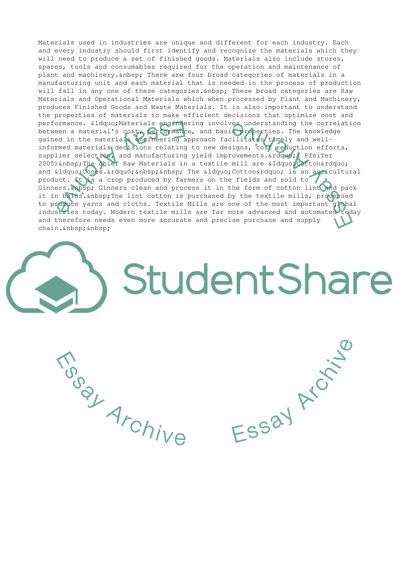Cite this document
(Textile Spinning and Weaving Mills Case Study Example | Topics and Well Written Essays - 2500 words - 1, n.d.)
Textile Spinning and Weaving Mills Case Study Example | Topics and Well Written Essays - 2500 words - 1. Retrieved from https://studentshare.org/business/1752384-purchasing-and-supply-chain-management-issues-and-sulotions
Textile Spinning and Weaving Mills Case Study Example | Topics and Well Written Essays - 2500 words - 1. Retrieved from https://studentshare.org/business/1752384-purchasing-and-supply-chain-management-issues-and-sulotions
(Textile Spinning and Weaving Mills Case Study Example | Topics and Well Written Essays - 2500 Words - 1)
Textile Spinning and Weaving Mills Case Study Example | Topics and Well Written Essays - 2500 Words - 1. https://studentshare.org/business/1752384-purchasing-and-supply-chain-management-issues-and-sulotions.
Textile Spinning and Weaving Mills Case Study Example | Topics and Well Written Essays - 2500 Words - 1. https://studentshare.org/business/1752384-purchasing-and-supply-chain-management-issues-and-sulotions.
“Textile Spinning and Weaving Mills Case Study Example | Topics and Well Written Essays - 2500 Words - 1”, n.d. https://studentshare.org/business/1752384-purchasing-and-supply-chain-management-issues-and-sulotions.


